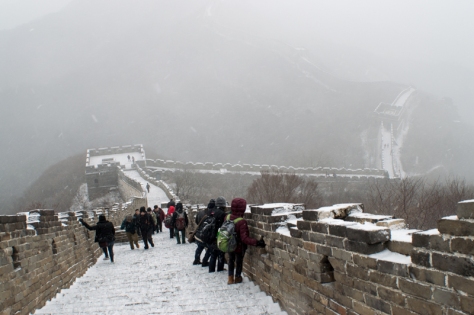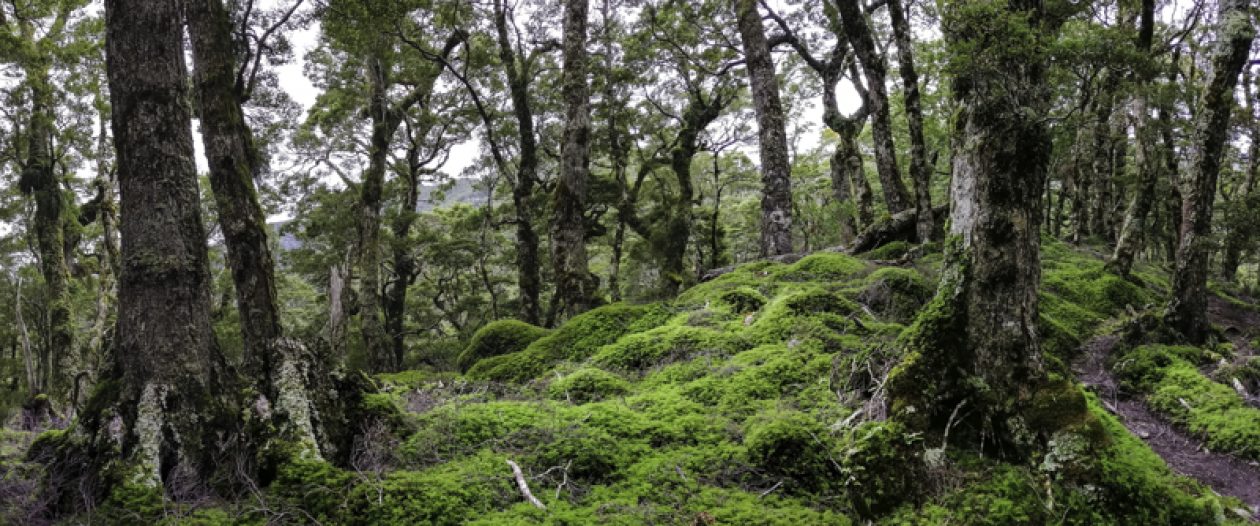The Great Wall of China is not a single wall but a series of walls built over a period of time. They are connected at various points. The earliest wall were built warring feudal states as a protective boundary. The first Emperor, Qin Shi Huang, whom united China, ordered further construction around 220BC. The wall near Beijing were mainly build during the Ming Dynasty, to protect against northern invaders. Originally built with gravel and earth, bricks and mortar were later used to fortify the walls. The width and height varies along the walls. Today, it is estimated to be over 21000 km! The largest man made structure. Jiànkòu and Mùtiányù sections were constructed during the Ming era, about 1300. Some sections were just fortification of older walls.
I anticipated that it would be very cold up here in the mountains. Pleasantly surprising, it was manageable. We continued further. There were no other footprints on the snow covered ground. In some places on the crumbled wall, woody shrubs made walking tough. Sometimes walking on the edges with bricks and paving stone loosely accumulated on the uneven ground. Again, the ‘snow nails’ on our shoes helped us tremendously.
Finally we a reached a crumbling small tower. The path past here was a steep ascent and carved out a semi-circle loop with a even steeper decent. Leo offered an alternative, to cut across the valley and continue back on the wall. This is the Ox Horn Edge Wall. Considering that we had slight difficulty over some previous descents, we opted to give this part a miss and rejoin on the other side. This leg of the hike would take about two hours ( estimate 2km). Along this new path, we found some paw prints in the snow. Perhaps foxes or perhaps just local dogs.

The distant views were still hazy due to the persistent smog. The height of the wall continually rose and dropped with the terrain. Hikers from Mùtiányù section passed us wondering how far they needed to go (perhaps to Xizhazi Village). This was our first contact with anyone since the man at Zhengbeilou. The cold and slippery surfaces made parts of the hike treacherous. One hiker literally sat on her bum and slide down steep descends. We soon reached the beginning and restored wall of Mùtiányù section, Tower 23 around 11pm. It has taken us about an hour to get here from Zhengbeilou. An industrious man had set up a small stall with some basic snacks. Red ribbons hung on trees perhaps for good fortune.

We continued to hike over smooth paved stones, with a few other hikers coming from Mùtiányù entrance. Everything was tidy, both the walls and walking surfaces. Almost sterile. The walls climbed and descended as it crawled over the mountains. Snowfall continued a the views ever-changing. We descended down on some steeps steps and reached the walled entrance of Tower 20 around 1145. This was was put up by the government to indicate the the sections we had just hiked is off limits to the public. We climbed onto a narrow ledge and jumped across a low wall. However, one slip, it is a long fall! This is the restored section of the wall. The stones used here are granite. The wall stretched zigzagging through the mountains. Towers popped up at intermittent breaks. The concentration of towers seem more that in Jiànkòu section.



Although restored, the surface was slippery. Furthermore, the snow and steep elevation compounded the problem. Those with spikes were steady. Alternatively is the cling to the wall and move slowly. From tower to tower, we too moved slowly like the crawling snake. At places, the walking surface is smooth and in some stone steps. As it is winter time, there were very few people walking on the wall. This suited me fine. At Tower 14, there is an exit by taking the cable car down the hill. We continued our hike until Tower 6 before descending to the main entrance of the Mùtiányù section. It was around 1315. We had hike the sections for about 4 hours.
Our transport picked us up and head to a local restaurant. We were all hungry and tucked in our lunch rather quickly. It was still snowing as we left the area and headed back to Beijing. Leo had been great. Welcome back to chaos and the din of a Chinese city. This had been, despite the heavy smog above in the mountains, one of the satisfying experiences of an iconic structure. Hiking on the wild sections had been a wonderful experience – the rugged natural beauty of an ancient and crumbling wall; with very little interference from other people and finally hiking with my family.
Hiking the unrestored Jiànkòu section had given us the raw beauty and the difficulty that comes with hiking the crumbling walls and undulating, sometimes steep climb and decent, terrain; the isolation (there was no one on this trail today until we reached nearer to Tower 23); and a sense of adventure. Finally, there is a sense of being present with the workers who built these walls and towers long ago. Their work untouched by restoration. Only encroached and etched away by nature if continued to be left alone. This is something to see, touch , feel and witness.







